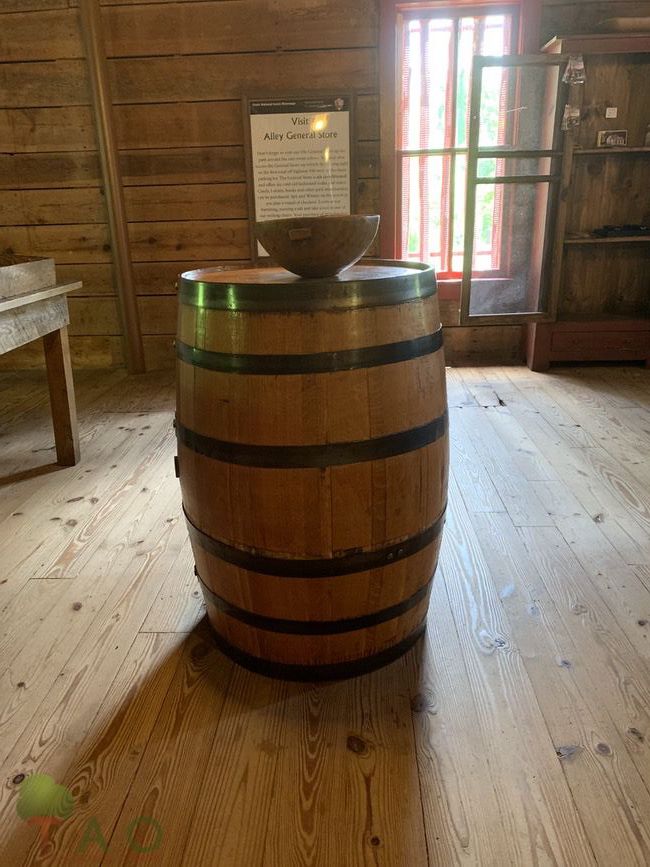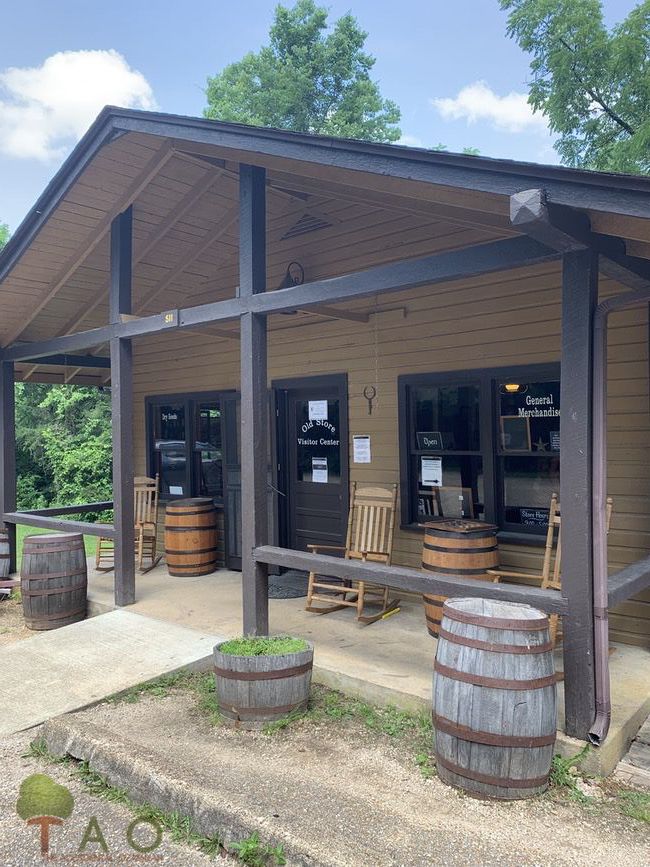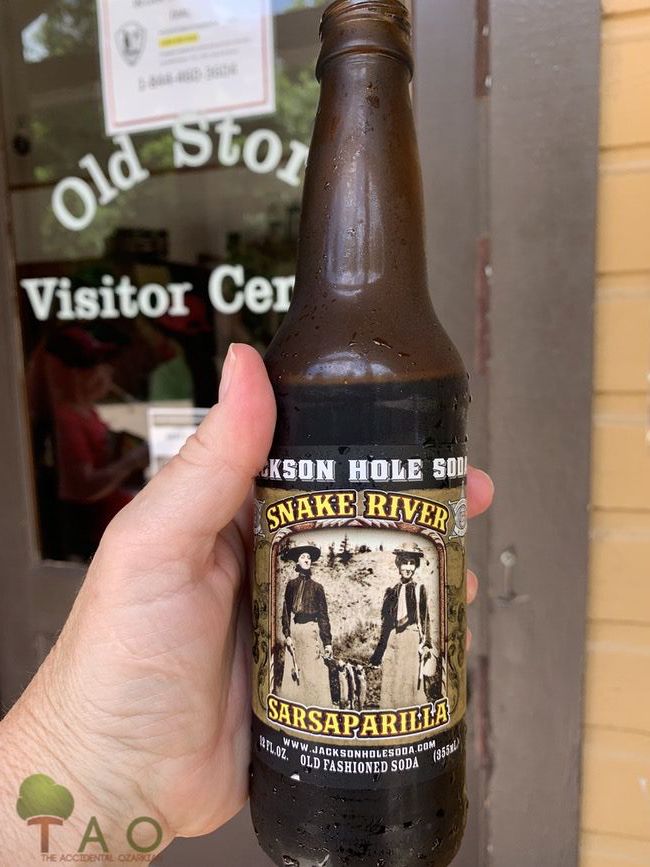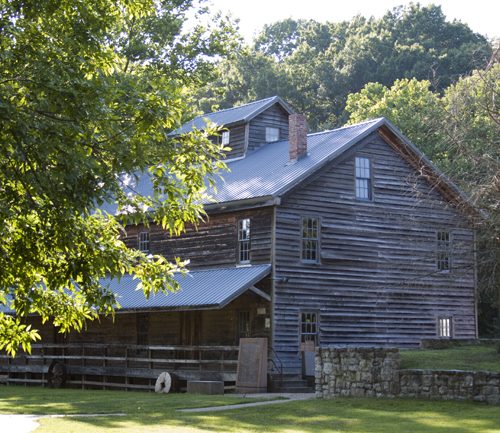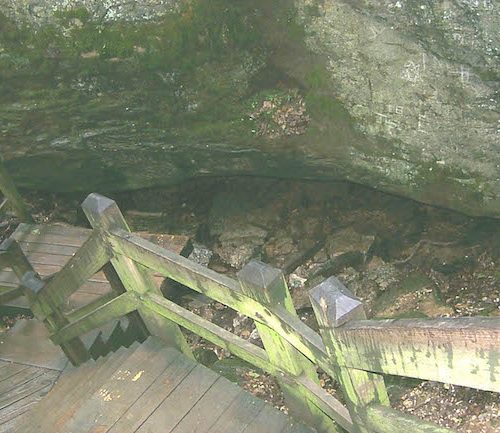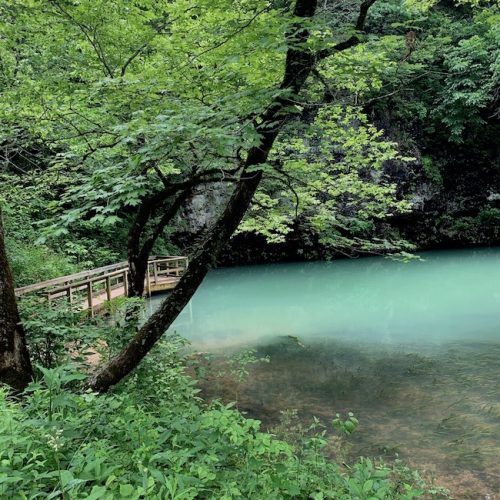Alley Spring Mill is located 6 miles west of Eminence on State Route 106. It’s a place you’ll want to take visitors when they come to the Missouri Ozarks, and belongs in the treasure trove called the Ozark National Scenic Riverways. If you have never been to the this place, the most-photographed mill in Missouri, it might be the time to go. The mill stands on a dramatic natural site where the 7th largest spring in the states gushes forth.
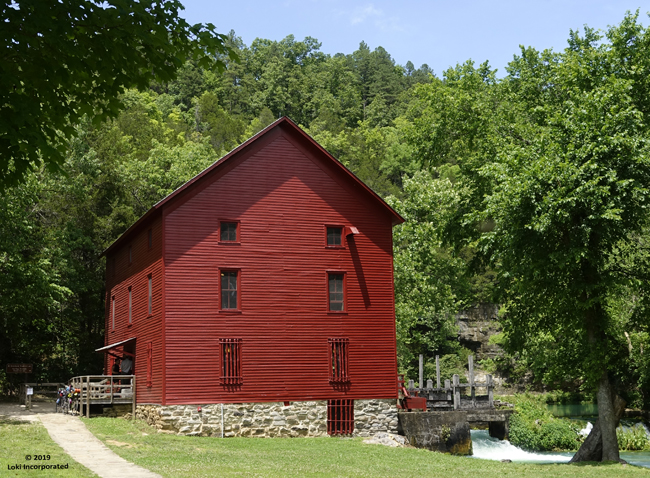
Alley Spring comes from a conduit that reaches at least 3,000 feet underground. Rain and water runoff from nearby Summersville (15 miles to the northwest) and snakes its way through dolomite cave passages. The spring powered the iconic mill back in the day, before it ran to the Jacks Fork River. It still flows strong today, and fills the Jacks Fork with on average 81 million gallons of water daily – fueling Ozarks’ canoe outfitter businesses.
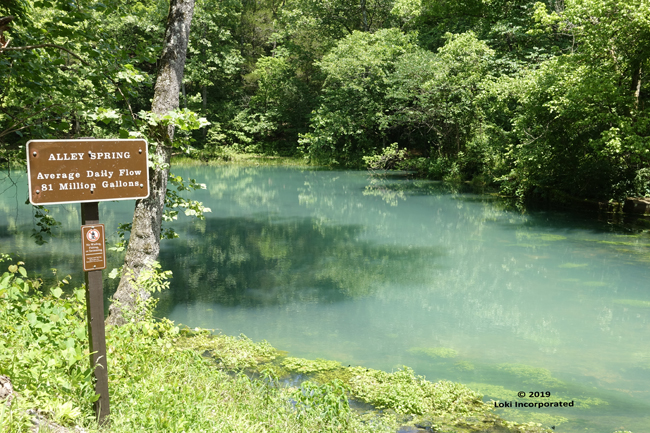
History of Alley Mill
Built by George Washington McCaskill in 1894, Alley Mill served as a merchant mill and claimed high tech practices of roller, as opposed to grist mills, and turbine, as opposed to water wheel power. Today’s Alley Mill replaced a mill that had been onsite since 1868. At first, it touted white paint with green trim, but at some time, someone decided to paint it cherry red.
This site also had a post office, named Alley, after John Alley, a miller who worked there. As with most milling sites, it saw lots of life and recreation, as farmers and their families brought grain to be ground into flour. History records dances, roller skating and baseball games as ways to pass time while the grain processing occurred.
Layout of Alley Mill
The mill has 3 floors and a basement. Visitors may not go into the basement, and this was the powerhouse of the former mill in all its glory, where elevators and conveyor belts whirred and snapped. On the first floor, operators dumped corn and wheat into bins and raised the harvest to chutes that sent the grain to milling machines. These machines ground the grain and sent it to yet another machine, where it was ground again, eventually ready for baking as flour.
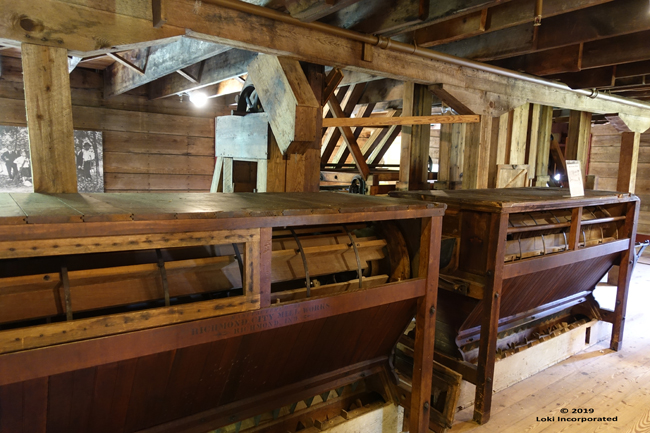
On the 2ndfloor, more sifting occurred. First, the mill used a silk screen bolter, which had a silk covered drum that spun in the middle of the machine. Flour entered the drum, then got forced out through the silk. You can see a horsehair brush on the machine that brushed flour off the silk. An auger then moved the flour into an exit chute.
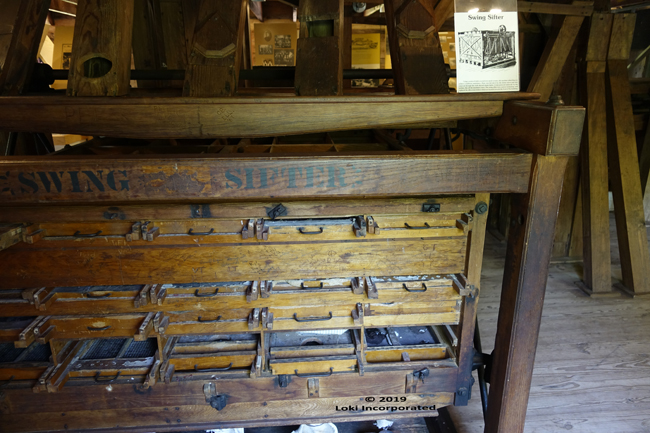
Later, a swing sifter replaced this technology. It used cloth-covered wire mesh screen that sifted the flour into chutes below.
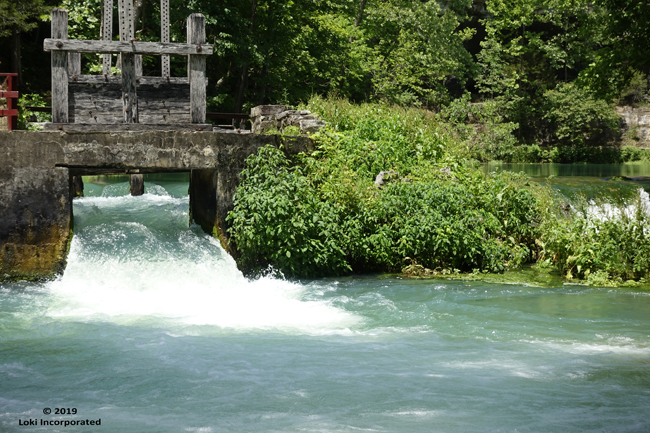
Outside, if you look under the back porch, you’ll see the turbine pit, which housed a 35-inch Leffel turbine. This turbine brought the power into the basement to begin the milling process, and a miller could control the speed of the turbine, which in turn, controlled the amount of water that entered.
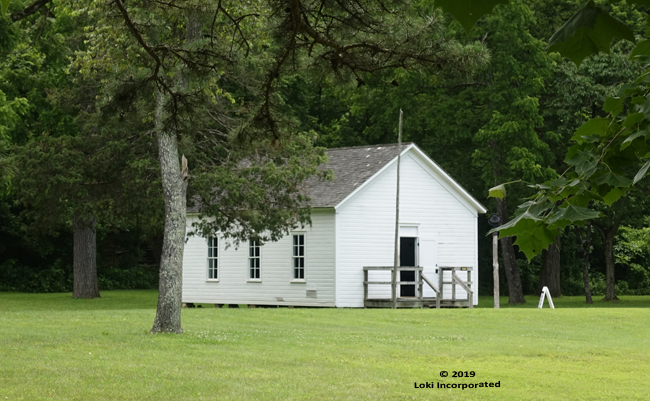
There’s More to Alley Mill
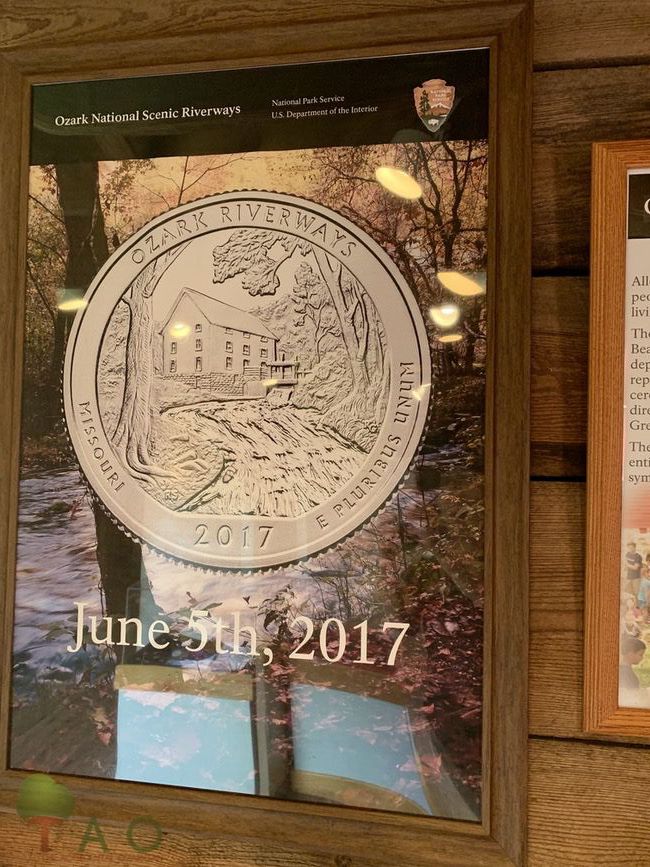 Inside the museum, located in the old mill, a 5-ounce, .999-pure-silver coin represents the “Beautiful Quarter Series,” which features Alley Mill.
Inside the museum, located in the old mill, a 5-ounce, .999-pure-silver coin represents the “Beautiful Quarter Series,” which features Alley Mill.
You can easily spot Story’s Creek School, a one-room schoolhouse from the early 1900s, moved here from another location and set near the old mill. It also served as the neighborhood church. It is open from Memorial Day weekend through Labor Day weekend. It represents, according to the National Park Service, a rule that schoolhouses – unless made of logs – needed to be white on the exterior. (Supposedly, the interiors were supposed to be painted light blue.)
We stepped inside and back in time, where the wooden desks that seated 2 students, sat in straight rows and held small chalkboards.
Up a hill from the schoolhouse, stands the general store, where you can purchase postcards, souvenir items, books, treats and sarsaparillas out of the cooler. Or, you can sit and rock on the front porch for a spell.
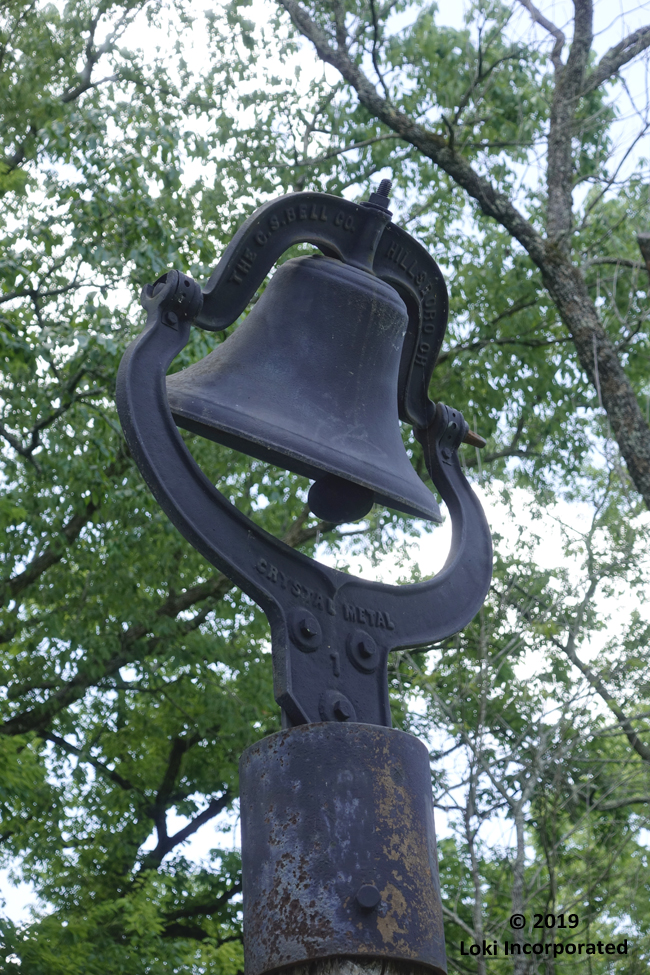
The site contains 795 acres, with trails that begin near the old mill. The mill routinely has hosted “Haunting in the Hills” annually in mid-October, where apple butter demonstrations, storytelling, old-time vendors, bluegrass music and more. Watch for announcements from the National Park Service regarding this year’s event.
Learn more about Alley Mill Spring.

